Exploring Culture of the Hmong People Ethnic Group in Ha Giang
The Hmong ethnic group in Ha Giang is very important in the rich tapestry of culture present in Northern Vietnam. Join MOTOGO Tours as we explore the life and culture of this populous ethnic group, so revealing their own practices.
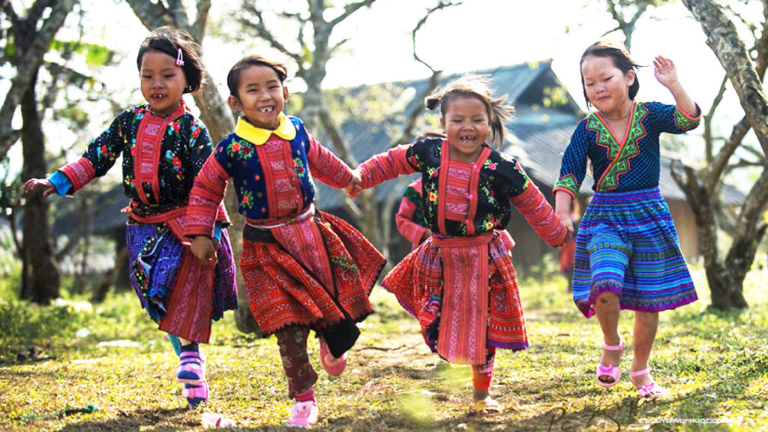
Characteristics of the Hmong Ethnic Group in Ha Giang
Ha Giang, tucked away at the country’s northernmost point, is known for its immaculate and magnificent scenery. On either side of meandering paths, the jagged limestone mountains loom, generating an odd environment that seems to hang between ground and heavens.
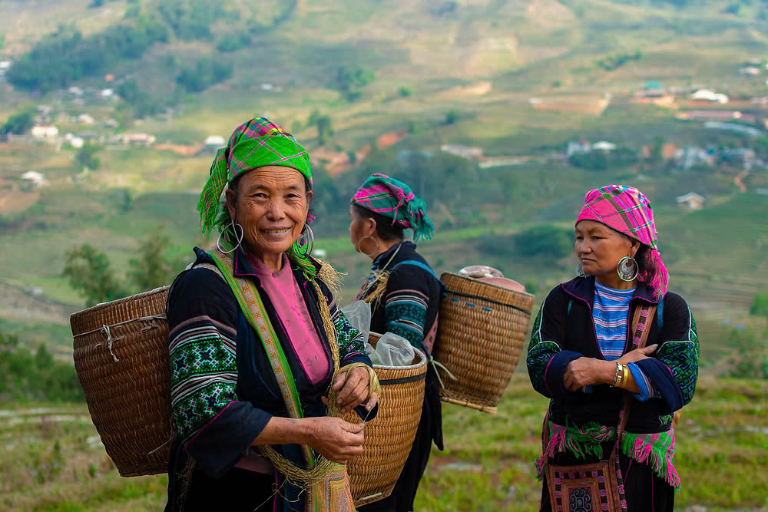
As farmers get ready for harvest, visitors may also take in the amazing sights of glistening, sunlit terraced rice fields. Still, the genuine appeal of this area is found in the modest but intriguing daily life of its ethnic groups—the Hmong people account for the most population.
The Resilience of the Hmong Ethnic Group in Ha Giang
Many ethnic minorities live in the northern mountainous area; among them, the Hmong people’s development is a remarkable evidence of their great adaptation and survival ability. The Hmong, especially those in Meo Vac, show relentless will to flourish regardless of their living circumstances. Living in the high highlands, this community always changes to keep their traditional values intact while improving their standard of living.
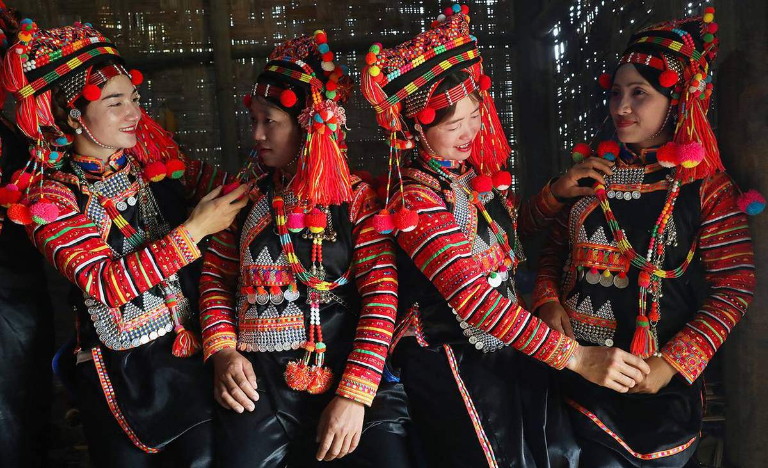
According to research, the Hmong ethnic group’s notable presence in Ha Giang dates back three centuries when they went southward to flee persecution. Divided mostly into two tribes, the White Hmong and the Flower Hmong, they today make up 31% of Ha Giang’s population. The Hmong live mostly in Quan Ba, Yen Minh, Dong Van, Meo Vac, two western districts—Hoang Su Phi and Xin Man.
Life Among the Clouds
The special style of life of the Hmong people usually stimulates interest. Why would they erect stilt homes at such great altitudes? For simpler farming, why not shift to less developed but more fruitful areas? Researchers believe that the decision to live on mountains has strong historical background.
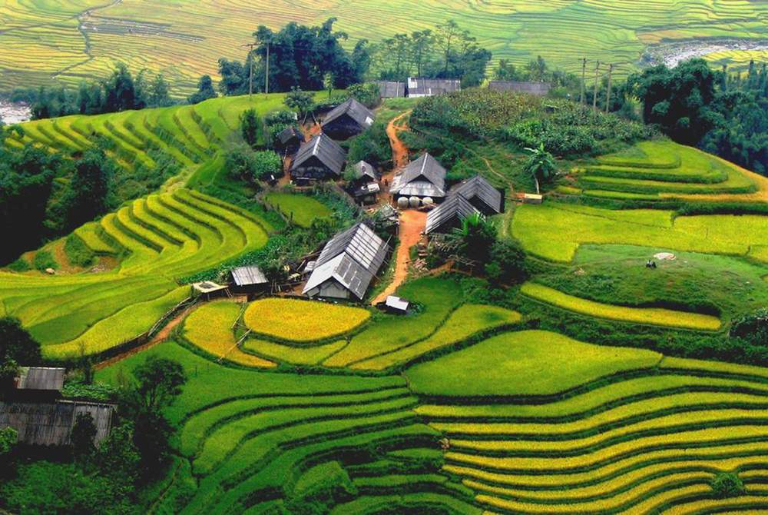
Other ethnic groups already lived in the more accessible places fit for farming before the Hmong arrived to Ha Giang. They so developed creative survival techniques and adjusted to living on high peaks. The adage “No mountain is too high for a Hmong’s knee,” captures this resiliency.
Farming Practices of the Hmong in Ha Giang
The Hmong in Meo Vac have developed original farming methods that have progressively formed a part of their cultural identity by their will to adapt to life at high altitudes. They established the habit of farming within rock hollows in a terrain mostly composed of jagged limestone rocks and depleted, degraded soil. This approach allows one to move dirt from other sources to cover these hollows therefore enabling the growth of appropriate crops including beans, sweet potatoes, and maize.
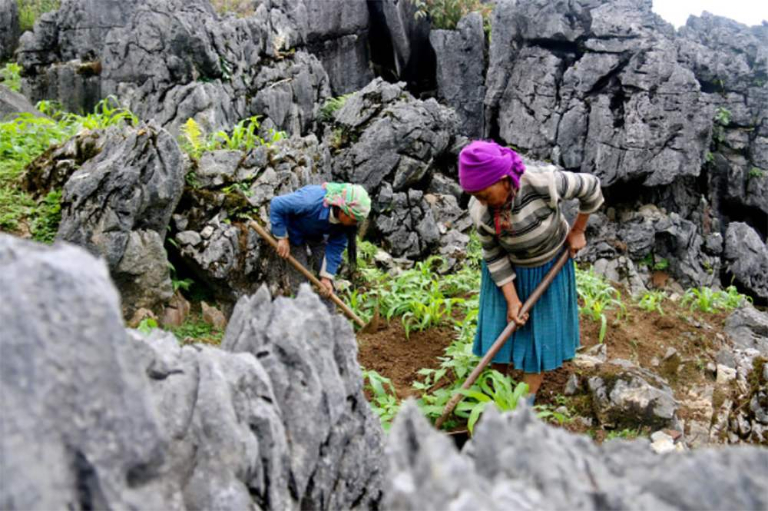
Showcasing their intelligence, logical reasoning, and extraordinary labor-based innovation, this farming legacy has come to represent the Hmong people. The women weave textiles at home while the men labor in the fields, therefore fostering a rich cultural lifestyle that fascinates guests from metropolitan regions.
The Allure of Tourism Among the Hmong Ethnic Group in Ha Giang
Ha Giang’s hilly area visitors can fully experience the real, sincere way of life of its people. Here are some very amazing encounters just waiting for you.
Participating in Ha Giang’s Local Markets
The Meo Vac market in the craggy highlands hums with the kind of exuberant celebration vibe. From honey and mushrooms to electrical devices and home goods, one can find a range of local products here. Fascinatingly, the Hmong people trade goods like chickens or dozen of eggs for tools or baskets utilizing bartering instead of cash.
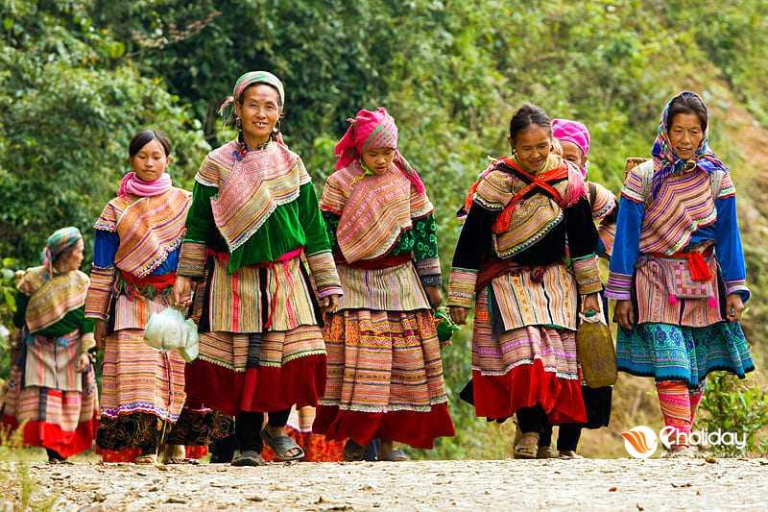
Reflecting the dynamic culture of the area, the mountain market is a rainbow of hues. The Hmong congregate every market day not only to trade but also to mingle, interact, and communicate. The Hmong marketplaces run on a revolving calendar unlike set market days in metropolitan regions. This structure lets the Hmong take advantage of several markets, therefore creating chances for more engagement and community building.
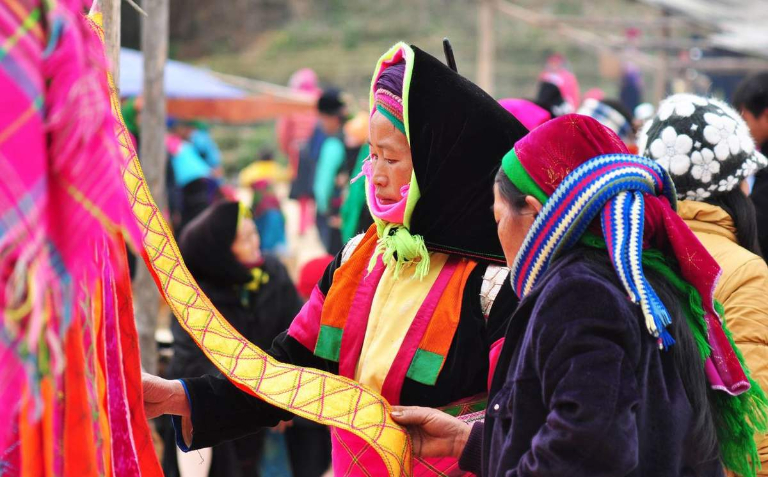
Usually beginning at dawn, markets find mist still covering the pathways. By midday the market closes and you might find women loaded with things and men going slowly home, maybe slightly drunk from the local rice wine. Visitors to the market can interact with Hmong culture, eat mouthwatering native cuisine, and buy hand-made trinkets.
Engaging in Traditional Festivals
Should you visit Ha Giang in the spring, particularly following the Lunar New Year or before and following the harvest season, you will have the chance to engage in energetic local celebrations including the Buckwheat Flower Festival, the Khau Vai Love Market Festival, and the Gau Tao Festival. These festivities honor local customs and traditions, therefore safeguarding age-old conventions and bringing guests near to the rich cultural legacy of the Hmong people.
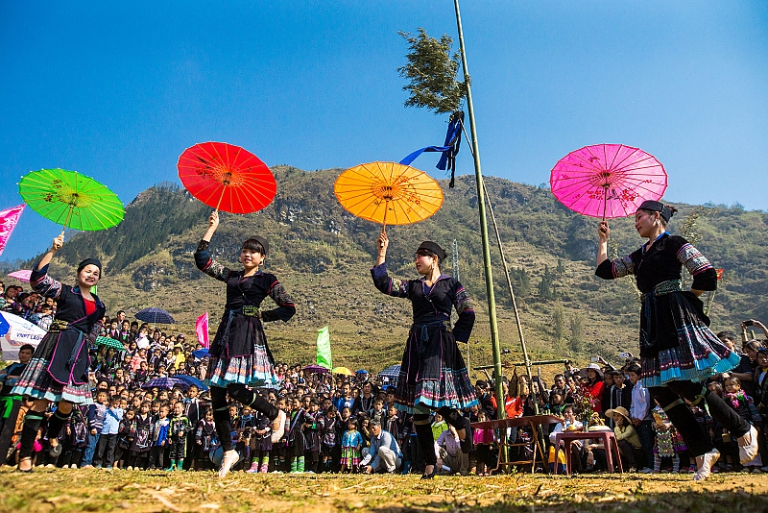
Bonfires, energetic dances, aromatic wine jars, and charming folk tunes filling the evenings will leave guests with lifelong memories. Therefore, if you find yourself caught in the festive mood, don’t hesitate to totally immerse yourself and appreciate the vibrant attitude. The very kind and inviting Hmong people make sure guests will feel at ease without any doubt or unfamiliarity.
Explore Hmong Cuisine in Ha Giang
The food of the Hmong ethnic community in Ha Giang is a vivid mirror of their agricultural methods, cultural identity, and ingrained customs. It’s distinguished by unusual tastes, vibrant displays, and a focus on locally grown foods.
1. Thang Co
Among the most famous Hmong meals is thang co. Although you could discover versions utilizing beef or pork, this filling is usually created from horse meat. To produce a thick, savory stew, the meat is simmered for several hours under a blend of herbs, spices, and stock.
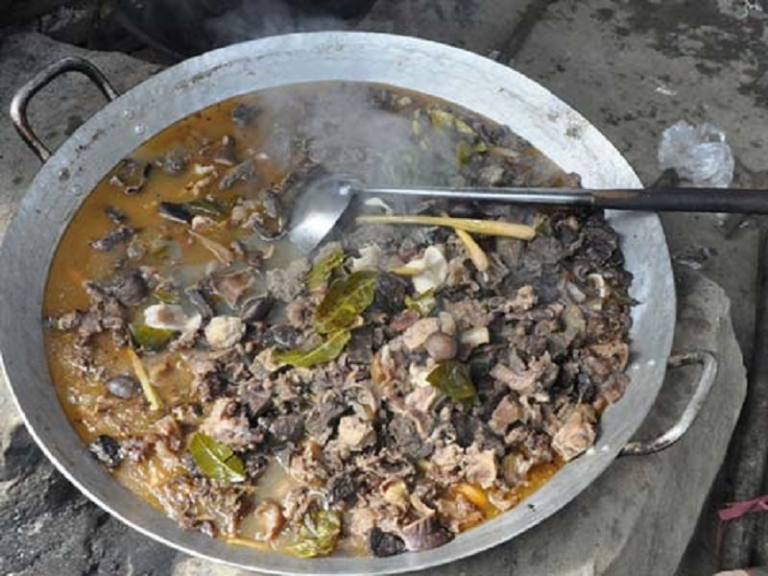
Usually serving rice or maize, the entrée lets guests savor the strong tastes. Eating thang co is communal, usually savored in big bowls shared among friends and relatives, hence stressing the Hmong principles of togetherness and hospitality.
2. Five-Color Sticky Rice
Five-color sticky rice is another delicious meal you really should sample. Steaming glutinous rice combined with natural colorings obtained from ingredients such butterfly pea blossoms, pandan leaves, and mung beans creates this visually amazing dish. Usually presented at celebrations and special events, five-color sticky rice represents prosperity and happiness.
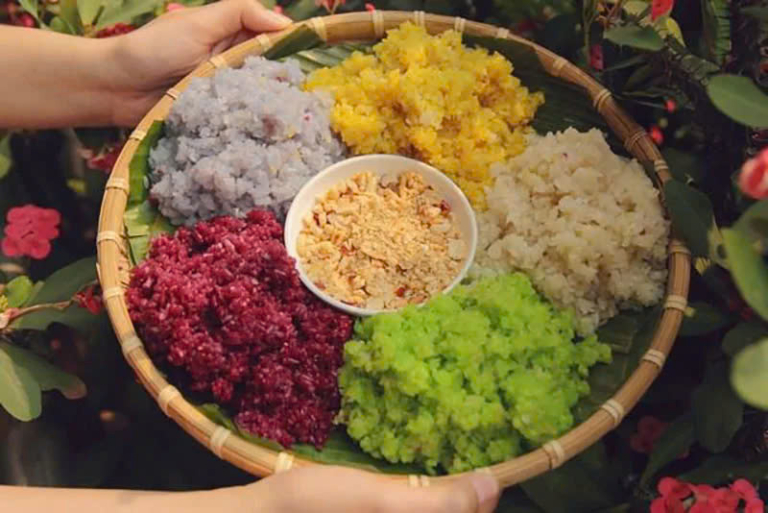
Five-color sticky rice is made by soaking the rice overnight then steam it using these natural colorings. The end effect is a rainbow of hues that highlights the Hmong people’s relationship to the environment in addition to pleasing the eyes. Usually accompanied by grilled meats or fried eggs, this meal offers a wonderful mix of flavors and textures.
Tourism and the Hmong Ethnic Group
Ha Giang’s tourism presents a special chance for visitors to interact with the rich culture of the Hmong ethnic group by means of experiences of their customs, way of life, and breathtaking scenery. Still, it’s important to approach travel with regard for the customs and values of the Hmong people.
Cultural Tourism Opportunities
Travelers arriving to Ha Giang are met with amazing scenery including terraced rice fields, towering mountains, and energetic Hmong settlements. Cultural tourism in this area allows guests to engage in the daily life of the Hmong people, therefore transcending mere sightseeing.
Homestays with Hmong Families
Staying in a homestay is one of the best ways to really encounter Hmong culture. Many Hmong families let visitors into their houses so they may see their daily life. Visitors can participate in age-old activities include farming, making regional cuisine, or learning about the nuances of their textile arts.
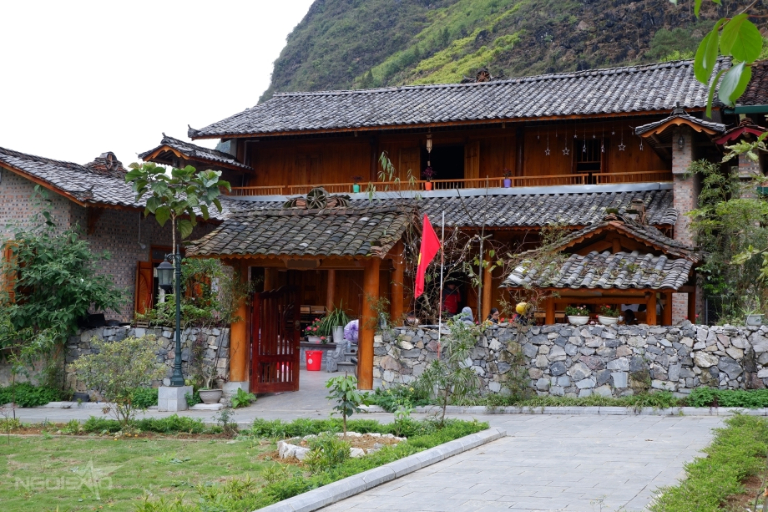
Participation in Festivals
Another great chance for visitors is attending regional celebrations in Ha Giang. For example, the Hmong New Year is a colorful celebration bursting with dancing, song, and ancient games. To further their respect of Hmong cultures, visitors can observe ceremonies, enjoy folk melodies, and engage in several sports such tug-of- war or stick pushing.
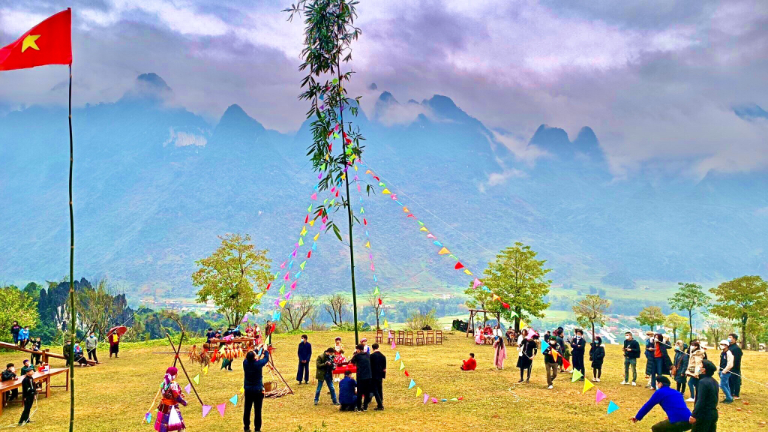
>>> Let’s see more: Accommodation in Ha Giang: Complete Guide 2025
Respectful Tourism Practices
Given the flood of visitors, it’s imperative that guests engage Hmong culture sensitively and respectfully. Here are some responsible ways visitors could interact:
Understanding Cultural Norms
Travelers should become acquainted with Hmong customs and etiquette before their trip. Knowing fundamental cultural standards helps one to avoid misinterpretation and respect the Hmong way of life. For instance, one should respect their traditional clothing and avoid considering it as a costume for pictures. As it respects their privacy, always ask permission before photographing people specifically.
Environmental Awareness
Though they are one of Ha Giang’s key draws, its stunning scenery also demand conservation. Responsible tourists should minimize waste, follow designated trails, and be aware of their environmental effect. Respecting the area’s natural beauty guarantees that it stays whole for next generations.
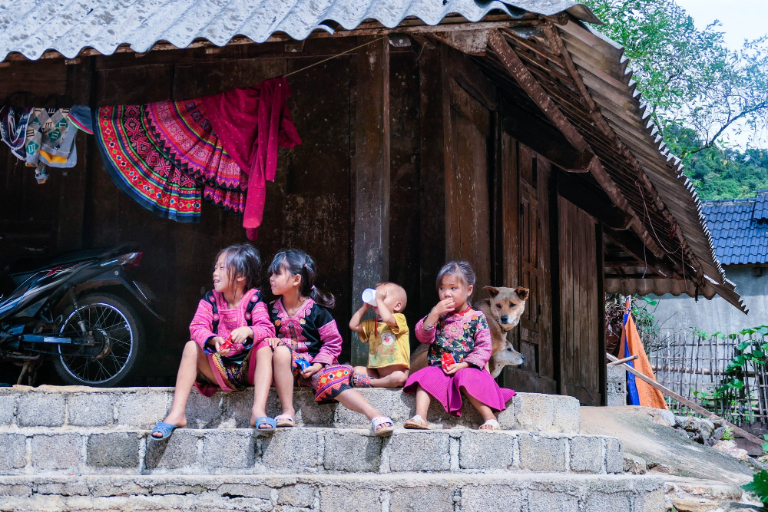
The Hmong ethnic group in Ha Giang is a vibrant part of Vietnam’s cultural mosaic, rich in traditions and resilient in the face of challenges. Engaging their culture, history, and hardships helps us to respect their particular identity and contributions to Vietnam’s varied legacy.
Related Posts:
- Ethnic Minorities in Ha Giang: Discovering Their Rich Traditions and Cultures
- Cultural Highlights of the Pa Then Ethnic Group in Ha Giang
- Understanding the Dao Ethnic Group in Ha Giang
- Lo Lo Ethnic Minority Group in Ha Giang: Insights into Their Way of Life






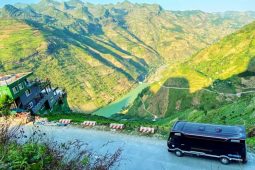




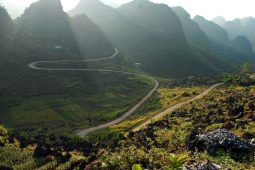
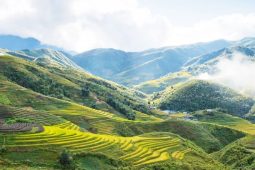

Be the first to comment!